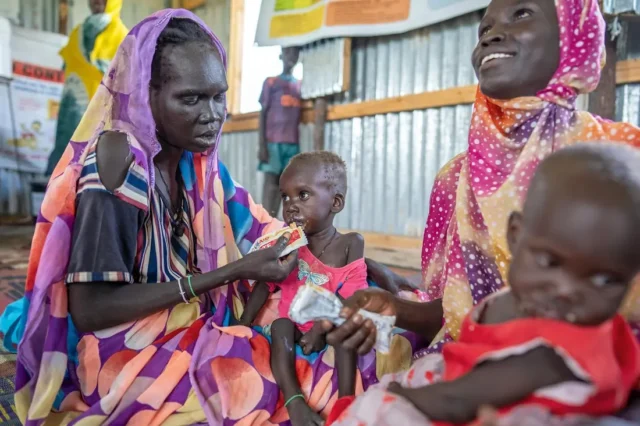Around the world today, cuts in foreign aid are not just numbers on budgets—they are shutting school doors for millions of youngsters. Particularly heartbreaking is how these reductions are undermining children caught in emergencies: conflict, displacement, and climate disasters. The most vulnerable are being robbed of what should be their fundamental birthright: education. Without urgent, deliberate action, we are staring at the possibility of an entire generation being left behind.
Globally, aid for education is projected to drop sharply—by about US$3.2 billion by 2026, a plunge of nearly 25 per cent compared to funding levels in 2023, according to Modern Diplomacy. This decline threatens to push more children—already at risk—out of school. Millions more who are struggling to stay in classrooms may be forced to leave. At the same time, humanitarian appeals in response to crises—from wars to environmental disasters—are being slashed. In some countries like Sudan and Chad, funding cuts reach as high as 90 per cent, putting millions outside aid plans entirely.

Table of Contents
Real-World Consequences of Aid Cuts: Case in Point
Take Bangladesh. In Cox’s Bazar, where more than 1.2 million Rohingya refugees reside, education centres have been forced to close due to sudden funding withdrawal. Thousands of learning centres shut down, leaving nearly half a million refugee girls and boys without access to formal learning. With no school, many of them are at risk of early marriage or being pushed into child labour—grave threats to their future and wellbeing.
Similarly, in other regions afflicted by conflict or climate shocks, the statistics are stark. By the end of 2024, over 473 million children were living in or fleeing conflict zones; more than 242 million had their schooling seriously disrupted by climate change. Over 85 million children caught up in emergencies are out of school globally. And now, with shrinking aid budgets, the outlook is deteriorating fast.

Local Leadership and Resilience: The Unsung Lifeline
Despite these setbacks, many children are still learning, thanks to local heroes: teachers, community groups, and civil society organisations who refuse to give up. These local actors are keeping education alive in the hardest of circumstances. Sometimes they organise classes in tents, outdoor spaces, or community halls. They often stretch their budgets, reduce staff salaries, or combine classes to try to maintain continuity.
But these are stop-gaps, and they come at a cost. Schools are being closed down, teachers are being laid off, or salaries are being cut. Student-to-teacher ratios are rising sharply. Educational quality drops, and many children simply lose out. The psychological impact is also real: for children in displacement or conflict-hit zones, school is more than just learning—it is stability, safety, a space to heal. Taking that away deepens trauma.
It is here that local leadership must be acknowledged, empowered, and supported. Instead of seeing local actors as mere implementers of externally shaped programs, they should be central to shaping education responses. They know local needs, culture, terrain, and can be more nimble and efficient. International funding and coordination must shift to reinforce national systems rather than bypass them. Trust should be built so that local civil society, teachers, and community leaders have real influence over how scarce resources are used.
What Must Be Done: Political Will, Funding, Reform
The choice before world leaders, donors, and humanitarian agencies is not easy—but it is clear. Here are essential steps to avoid turning children into a “lost generation”:
- Protect and increase funding for education in emergencies. Donors must reverse and stop further cuts. Funds must be reliable, predictable, and sufficient to meet known needs. Cuts of 25 per cent or more will lead directly to millions more out of school.
- Elevate local actors in decision-making. Local communities, teachers, and NGOs must have a voice in shaping education strategies. This includes planning, resource allocation, and defining priorities. The “Grand Bargain,” an agreement made in 2016, promised more local leadership—but in many places it remains “a paper promise.”
- Align humanitarian and development funding with national education systems. Rather than creating parallel systems or silos, support must plug into and strengthen what governments and local systems are already doing. That builds resilience: so when a crisis hits, the system is better able to respond without total collapse.
- Place education high on global political agendas. With summits like the United Nations General Assembly underway, education in emergencies must be a headline issue—not an afterthought. Leaders should commit not only to rhetoric but to concrete, accountable pledges that safeguard children’s right to learn even when disaster strikes.
- Innovate delivery methods. In crisis settings, traditional schooling may be impossible. But learning can continue through remote tools, mobile classrooms, flexible schedules, and community-based learning centres. These methods need investment and support—and must be adapted to the context.

Conclusion: No Turning Back
We are at a crossroads. If the global community allows aid cuts to erode educational access any further, we risk sacrificing not just individual lives, but the potential of entire societies. Education is more than schooling—it’s hope, opportunity, resilience. It is an investment with returns measured in health, peace, economic growth, and human dignity.
For children living through conflict, displacement or climate disaster, losing access to education compounds all other risks. But it doesn’t have to be this way. Governments, donors, communities, and organisations have the power, responsibility, and moral duty to ensure no child is left in the dark because of reduced aid. With political courage, funding commitment, and recognition of local leadership, a generation can still be saved.
Join Our Social Media Channels:
WhatsApp: NaijaEyes
Facebook: NaijaEyes
Twitter: NaijaEyes
Instagram: NaijaEyes
TikTok: NaijaEyes
READ THE LATEST EDUCATION NEWS








































